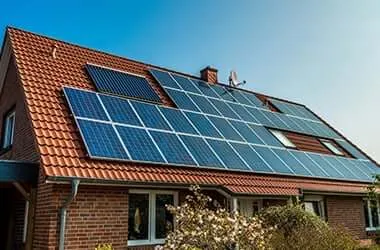photovoltaic cell
The Future of Energy Photovoltaic Cells
As the world grapples with the pressing issues of climate change and diminishing fossil fuel reserves, the search for sustainable and eco-friendly energy solutions has become imperative. Among various green technologies, photovoltaic (PV) cells have emerged as a leading contender in the quest for renewable energy. These remarkable devices have the potential to revolutionize the way we harness solar energy, paving the way for a cleaner, more sustainable future.
Photovoltaic cells, commonly known as solar cells, are semiconductor devices that convert sunlight directly into electricity. The principle behind their operation is the photovoltaic effect, discovered by French physicist Edmond Becquerel in 1839. When sunlight strikes a PV cell, it excites electrons within the semiconductor material, typically silicon, causing them to flow and generate an electric current. This process is remarkably efficient, with modern solar cells achieving conversion efficiencies of up to 25%.
One of the most significant advantages of photovoltaic cells is their ability to generate electricity without emitting greenhouse gases or other pollutants. As solar energy is abundant and renewable, PV cells offer a viable solution to reduce our reliance on fossil fuels, contributing significantly to diminishing carbon footprints. Moreover, the installation of solar panels is relatively simple, allowing both homeowners and businesses to particpate in the clean energy movement.
Over the years, advancements in technology have dramatically reduced the cost of photovoltaic cells, making solar energy more accessible than ever. The price of solar panels has dropped by over 80% since the early 2010s, enabling homeowners to install solar systems at a fraction of the cost. Government incentives and subsidies have further propelled the adoption of solar energy, creating a favorable landscape for investment in renewable energy projects.
photovoltaic cell

In addition to their environmental benefits, photovoltaic cells can also provide economic advantages
. The solar industry has become a significant source of job creation, with various roles in manufacturing, installation, and maintenance. As more people transition to solar energy, an increase in job opportunities within this sector can stimulate local economies and enhance energy independence.Despite their numerous benefits, photovoltaic cells are not without challenges. One of the primary limitations is their reliance on sunlight, making energy generation inconsistent, particularly in regions where sunlight is less abundant. To address this issue, researchers are exploring energy storage solutions, such as batteries, that can store excess energy generated during sunny periods for use during cloudy days or at night. Integrating solar energy with smart grid technologies can also optimize energy distribution and consumption, enhancing the overall efficiency of photovoltaic systems.
Furthermore, the production of photovoltaic cells poses environmental concerns. The mining of raw materials for solar panels, such as silicon and rare metals, can lead to habitat destruction and pollution. However, many companies are now making strides toward sustainability by adopting better resource management practices and developing recycling programs for end-of-life solar panels, ensuring that the environmental impact is minimized.
Looking ahead, the future of photovoltaic technology is bright. Innovations in materials science, such as perovskite solar cells, hold promise for even higher efficiencies and reduced production costs. Additionally, advancements in building-integrated photovoltaics (BIPV) allow architects to design structures that seamlessly incorporate solar energy systems, enhancing efficiency without sacrificing aesthetics.
In conclusion, photovoltaic cells play a crucial role in the transition to a sustainable energy future. With their ability to harness the sun's energy cleanly and efficiently, they offer an attractive alternative to conventional energy sources. While challenges remain, ongoing research and development promise to enhance their capabilities and further integrate them into our energy systems. By embracing photovoltaic technology, we can take significant strides toward a greener, more sustainable planet for future generations.
-
Understanding the Advantages of Solar String Inverters for Your Energy SystemNewsApr.29,2025
-
Choosing the Right PV Inverter: A Comprehensive GuideNewsApr.29,2025
-
The Future of Solar Power: Exploring Bifacial Solar PanelsNewsApr.29,2025
-
The Complete Guide to Solar Panels: Efficiency, Cost, And InstallationNewsApr.29,2025
-
The Best Options for Efficiency and Cost-EffectivenessNewsApr.29,2025
-
Harnessing the Power of Off-Grid Solar Inverters for Energy IndependenceNewsApr.29,2025







